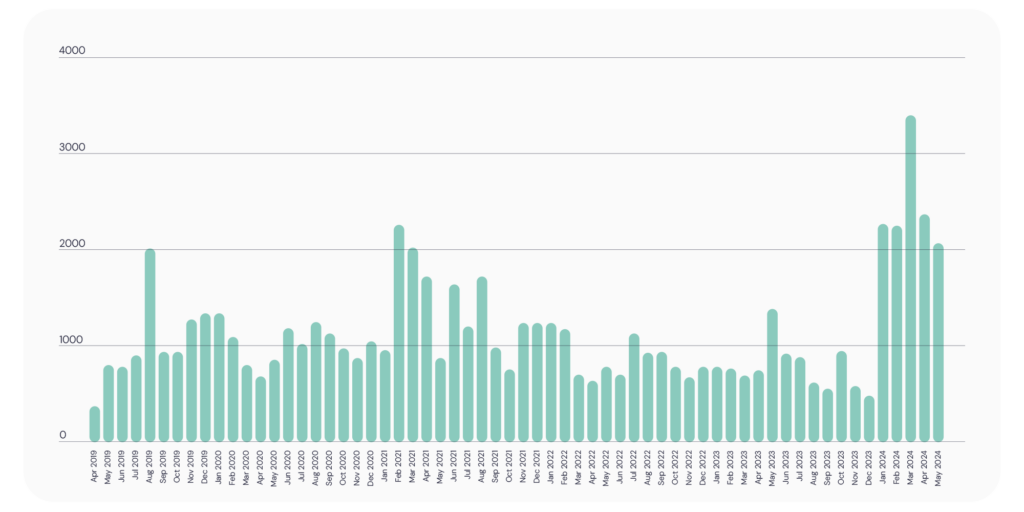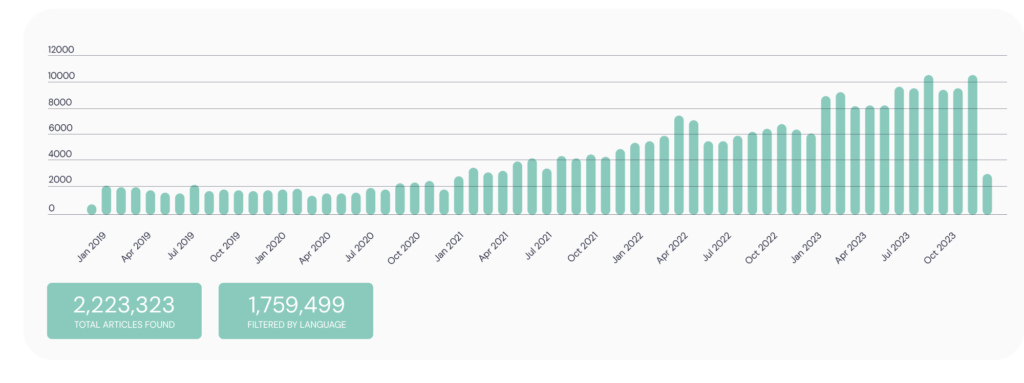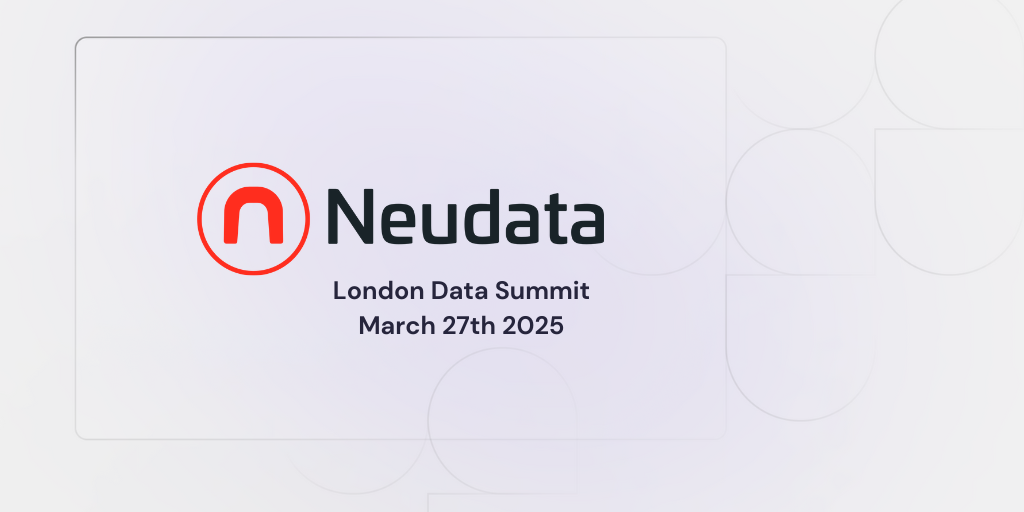9 min read
Adverse Media Monitoring: How to improve overall Supply Chain Management

In today’s dynamic business environment, supply chain management has become increasingly complex, marked by global connectivity and potential disruptions. Open Source Intelligence (OSINT) offers a powerful solution for organizations seeking to navigate these challenges. Semantic Visions, a pioneer in harnessing the power of AI and ML in OSINT, is at the forefront of helping organizations build resilient supply chains through advanced technology, data enrichment, and analytics.
Information collected through Open Source Intelligence (OSINT) is gathered from publicly available sources and channels, leveraging publicly available data to gather insights, identify trends, and support decision-making processes across different domains and industries.
Smart OSINT monitoring and the delivery of client-specific enriched data offerings support our clients’ requirements for identifying, assessing, and mitigating a wide range of risks across their operations. By leveraging publicly available information and intelligence, businesses enhance their risk management capabilities and protect their assets, reputation, and stakeholders.
OSINT is a critical element in tracking organizational reputation; the process, more commonly known as adverse media monitoring, plays a major role in allowing companies to avert reputational damage and mitigate risks across their supply chains.
Information collected through OSINT leverages publicly available data to gather insights, identify trends, and support decision-making processes
Websites, online portals, social media, public records, and databases contain valuable information about individuals, organizations, and legal proceedings. Valuable insights and data on various topics can be collected from research reports, white papers, academic publications, or industry studies. Other sources are news aggregators and RSS feeds; automated tools and scripts are used for web scraping and data mining to extract structured data from web pages.
In addition to these, there is a growing demand for satellite technology, geospatial imagery, and satellite data, providing further visual insights into physical locations, shopping routes, infrastructure, and environmental changes. By analyzing satellite imagery, businesses may monitor supply chain activities, track changes in land use, and follow up on infrastructure developments.
All these sources provide a wealth of information, ranging from current events to consumer sentiments. By monitoring hashtags, keywords, mentions, and user interactions, businesses can gain insights into trends, sentiments, and emerging issues. Subscribing to relevant feeds allows businesses to stay informed about industry news, market trends, and geopolitical developments.
Semantic Visions has been leveraging OSINT data since its inception and focusing on global news outlets and other sources of publicly available data. This article covers our Supply Chain Risk Management offering supported by advanced technologies and expertise that have supported our clients in navigating the challenges of global supply chain risk management.
Modern piracy and Maritime disruptions
In today’s interconnected global trading, over 80% of the goods are carried by sea, with the percentage even higher for most developing countries. World maritime trade bounced back in 2021, when shipments grew by 3.2% to reach 11 billion tons, an improvement of 7 percentage points compared with the 3.8% decline in 2020. The global Ocean Freight market size was valued at USD 74901.67 million in 2022, forecast to reach USD 89906.44 million by 2028.
In recent years, some of the major maritime routes have come under repeated strains, due to maritime accidents or geopolitical insecurities, causing delays, provoking insecurities and supply chain disruptions.
The graph below illustrates the rise in supply chain disruptions due to Modern piracy, as seen through global media, between 2019 and 2024

Note the peaks:
- JUL 2019, Ships kidnapped off Nigeria, hijacked in the Singapore Strait
- JAN 2021, Turkish crew kidnapped off Nigeria
- NOV 23-March 24, Attacks on ships in the Arabian sea
Monitoring global maritime supply chain operations is executed by the highly automated Semantic Visions monitoring system. It delivers an early detection of relevant local events, long before they reach international news, in a structured and updated format, helping the client to gain an invaluable early warning as well as crucial insights into the details of logistics and delivery.
Keeping supply planning under control helps to avert the shortage of booking capacity, delivery delays, rising cost of transport, fuel cost, transportation and storage costs.
Our system alerts organizations to geopolitical events all around the globe, such as trade tensions or civil unrest, that may impact their suppliers or transportation routes. Businesses, equipped with this information, can take proactive measures to diversify their supplier base, adjust inventory levels, or reroute shipments to minimize the impact on their operations.

European Energy crisis and LNG import terminals
March 2022 was marked by the nervous anticipation of dire energy shortages and industrial production disruptions as a result of breakdown of long-established energy supplies to European markets.
This chart shows the surge in media coverage of LNG imports into the EU

Back in 2022, In the midst of the European energy crisis resulting from the disrupted energy supply chains due to sanctions on Russia oil and gas imports, Semantic Visions was commissioned to monitor and analyze the preparation and construction of LNG import terminals.
EU countries were frantically searching for ways to secure energy supplies and one of the alternative supplies was the importation of liquified gas (LNG). To accommodate supplies by LNG tankers, due to the lack of the adequate infrastructure, the so-called FSRUs (floating storage and regasification units) had to be employed. These units are similar to a land-based terminal and have the onboard capability to vaporize LNG and deliver natural gas through specially designed offshore and near-shore receiving facilities.
Scope of our monitoring was the Baltic sea locations suitable for anchoring the incoming LNG carriers, setting up platforms and FSRU units.
Using OSINT monitoring and analysis, we were able to provide a clear picture of the situation: the deals and contracts closed, government and local authority’s regulations, supplier changes and expansion. We followed the position of the incoming LNG carriers, zoomed in on the progress of the construction work, mapped the shifting legal framework stipulated by the authorities, as well as growing protests of the local communities, emerging environmental issues, and the changing public opinion on these terminals. To provide our client with a complete picture, our data was complemented by up-to-date geospatial imagery of the sites, supplied by our partner, a leader in the industry.
Our initial findings and insights, sourced from publicly available feeds, were presented in an intelligence analysis of the situation, stating the current state of affairs and outlining possible outcomes. These were later confirmed by the subsequent development, in all their aspects: business, legal, and environmental.
By continuously monitoring online sources for relevant information, organizations can identify emerging risks and opportunities and respond promptly to potential disruptions.
Lithium mining projects monitoring
Acknowledging the importance of the climate pledge, most global economies have embraced the green agenda and started to introduce numerous policies to face the environmental challenges. Among them is a technological shift in finding more sustainable alternatives to fossil fuels . As part of this push for zero-carbon solutions and EV mobility, the quest to secure mineral supplies has become a primary focus of many governments’ and private business initiatives.
It is estimated that the global market for lithium mining is expected to grow from $5.7 bn in 2023 to reach $9.1 bn by the end of 2028. The mineral, called “white gold”, makes up from 11 to 17 percent of a Li battery and for example, the Tesla Model S Long Range battery contains approximately 63 kilograms of the mineral.

Media coverage of Global Lithium mining, 2019-2024
In order to monitor the growing lithium mining projects in Europe, Semantic Visions has set up an automated comprehensive process that maps the entirety of Lithium mining projects, covering all the stages of the enterprise: from prospecting, contracting, license approvals, environmental assessments, project development, construction work and the actual extraction.
Our AI automated tool provides daily monitoring and alert signaling of all the current operations. Our automated monitoring relies on publicly available sources, collecting information in 12 languages, spanning all events in relation to Lithium mining operations.
From Ukraine to Ireland, from Sweden to Portugal, our technology harvests all operational, regulatory, and commercial details. These are further filtered and verified, and finally delivered to our client who benefits from reliable and updated actionable data.
Semantic Visions’ OSINT platform can alert organizations to geopolitical events, such as trade tensions or civil unrest, that may impact their suppliers or transportation routes.
One of the key benefits of OSINT is its ability to provide real-time visibility into the supply chain ecosystem. By continuously monitoring online sources for relevant information, organizations can identify emerging risks and opportunities and respond promptly to mitigate potential disruptions. For example, Semantic Visions’ OSINT platform can alert organizations to geopolitical events, such as trade tensions or civil unrest, that may impact their suppliers or transportation routes. Equipped with this information, organizations can take proactive measures to diversify their supplier base, adjust inventory levels, or reroute shipments to minimize the impact on their operations.
Furthermore, OSINT enables organizations to gain deeper insights into the practices and reputation of their suppliers and business partners. Semantic Visions’ advanced analytics capabilities allow organizations to analyze publicly available data to assess the financial health, regulatory compliance, and ethical standards of their suppliers. By identifying potential risks early on, organizations can make more informed decisions about their supply chain relationships and take steps to mitigate any vulnerabilities.
In addition to risk mitigation, OSINT can also drive strategic decision-making and competitive advantage in the supply chain. By analyzing market trends, consumer sentiment, and competitor activities, organizations can identify new opportunities for growth and innovation. Semantic Visions’ OSINT platform provides organizations with actionable insights that enable them to anticipate market shifts, optimize product offerings, and stay ahead of the competition.
By leveraging the power of OSINT, organizations can gain real-time visibility, mitigate risks, and drive strategic decision-making in their supply chain operations.
Semantic Visions, with its cutting-edge, continuously evolving technology and expertise in data analytics, is committed to empowering organizations to harness the full potential of OSINT and build resilient supply chains for the future.






